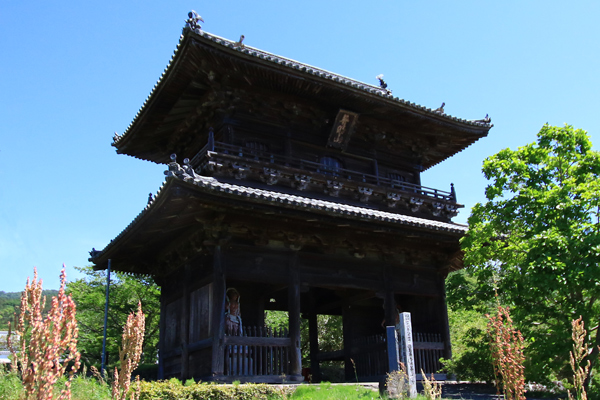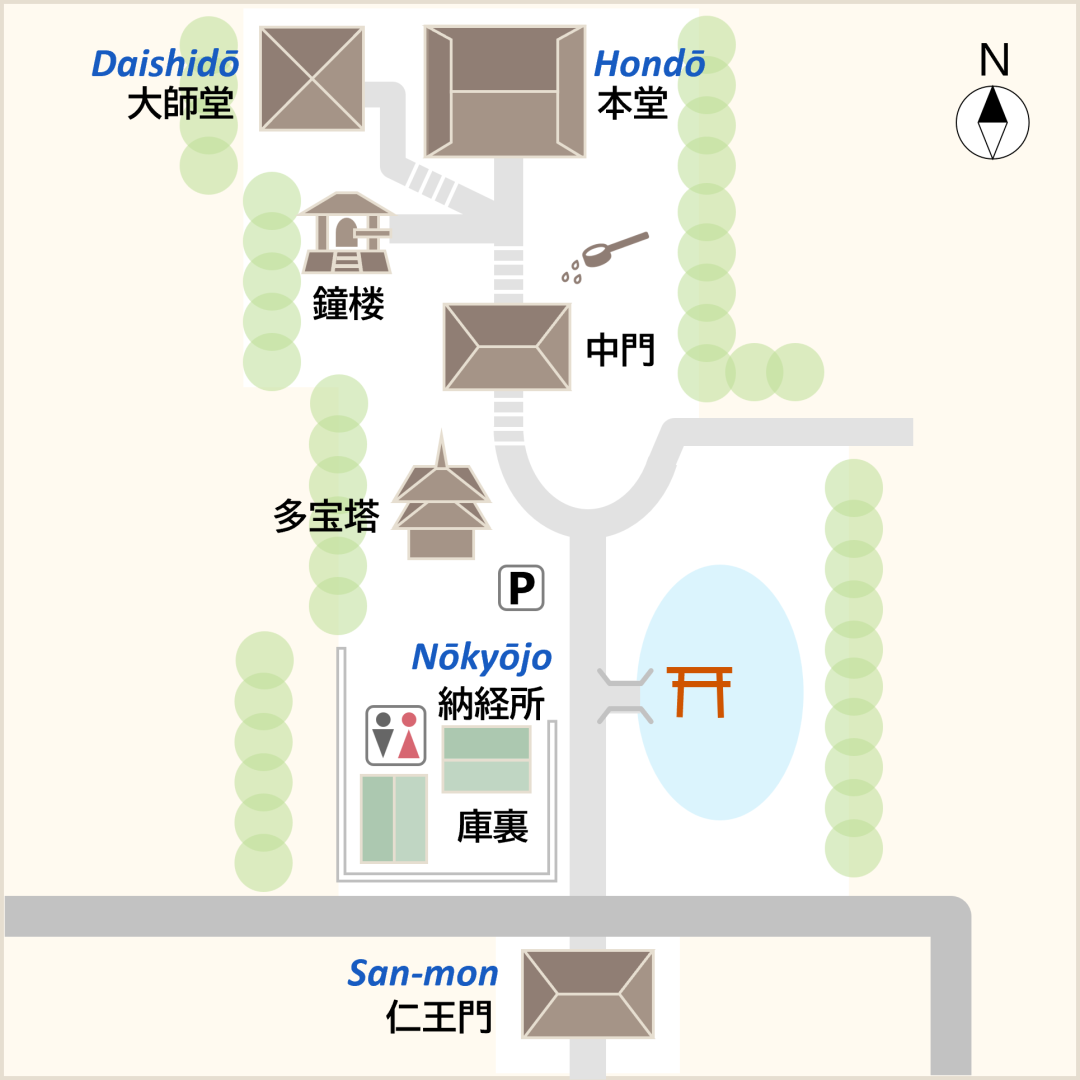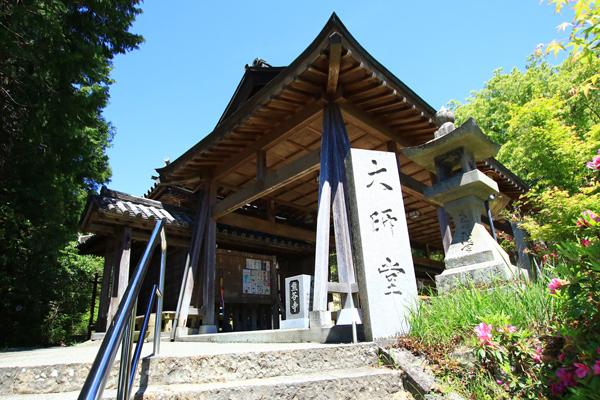The Shikoku Pilgrimage Temple Guide
Temple 8, Kumadaniji

Precinct map

History of the temple
According to legend, in 815 Kobo Daishi was engaged in Buddhist training in Akagadani Valley when Kumano Gongen of Kishu (current Wakayama and western Mie) appeared to him and said, "Save mankind in the distant future." Kumano Gongen gave him a 5.5 cm gold statue of Kannon Bosatsu (Bodhisattva Who Hears the Sounds of the World) and departed into the sky. Kobo Daishi built a hall, carved a life-size statue of Senju Kannon Bosatsu (Thousand-armed Kannon Bosatsu) as the principal image of the temple, and placed the gold statue inside the larger statue. There is also a Chinjudo (Guardian Hall) that enshrines Kumano Gongen in the temple grounds. According to the Shikoku Henro Reijoki (Shikoku Pilgrimage, 1689), "The precincts are clean and quiet, the valley is deep, the water is cool, and there is a panoramic view of the Nankai Sea. The statue of Senju Kannon Bosatsu has 126 grains of Buddha's remains in its hair". This gives an idea of what it was like in the past.
Some say that by the Genroku era (1688-1704), the temple had already been burned several times. However, the fire in 1927 was especially severe; it was so fierce that it destroyed the principal image of the temple along with the Hondo. Thanks to the efforts of successive chief priests, the Hondo was rebuilt in 1940. However, other construction work was interrupted by World War II. Finally in 1946 the entire structure was completed, and a ceremony was held to consecrate the newly carved principal image.
Kumadaniji has one of the largest Niomon gates among the pilgrimage temples. It was built in 1687 and is designated as a Cultural Property by Tokushima Prefecture. The gate is an eclectic blend of Japanese and Chinese styles. It is nine meters wide and 12.3 meters high. The ceiling and pillars on the second level are decorated with heavenly maidens and other figures in rich colors. The seated statue of Kobo Daishi in the Daishido was made during the Muromachi period (1336-1573) and is designated as a Cultural Asset by the prefecture.
Highlights
Daishido
The Daishido is at the top of a staircase (36 steps) to the left of the Hondo. It was built in 1707 and is a Prefectural Cultural Property.
Two-Storied Pagoda
Built in 1774, the pagoda enshrines statues of Dainichi Nyorai in the Womb Realm and four Nyorai statues which surround the Dainichi Nyorai.
Bentenjima Island
Located near the temple office, it is a place of prayer for easy childbirth. There is an arched bridge leading to the shrine.

Annual Events
| 18th of every month | Public Exhibition of the Principal Image |
Details
Names: Fumyōzan, Shinkōin, Kumadaniji
Denomination: Koyasan Shingon sect
Principal Image: Thousand-armed Kannon Bosatsu
Founder: Kobo Daishi
Founded: 815
Access
Address: 185, Donari-Maeda, Donari-cho, Awa City, Tokushima 771-1506
Phone: 088-695-2065
Parking: 50 cars, 6 microbuses and buses in three parking lots, payment required
Lodging: None
Official website: None
X: @kumadaniji
